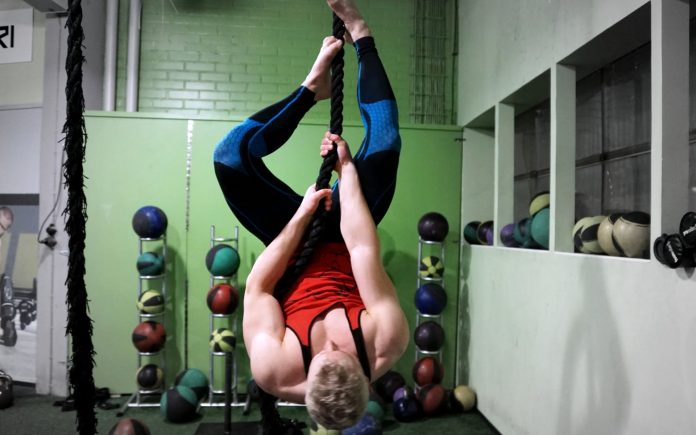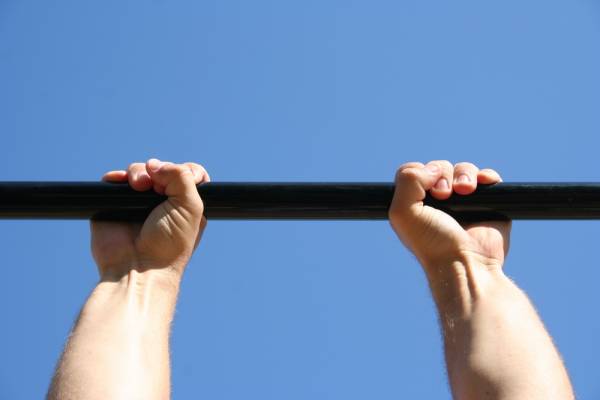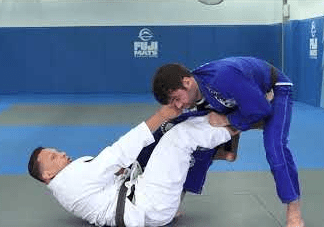
BJJ is an athletically unique discipline. A very common complaint among new students is feeling fatigued in muscles they didn’t know they have. The fact that BJJ takes place on the ground for 90% of the time is enough to guess that you’ll need a different type of strength than that required to lift weights, for example. First, you’ll discover that your body has stabilizing muscles apart from the pushing and pulling muscles. They’re going to take some time to get used to the new movement patterns you expose your body to. Next, and much more important, is the realization that your arms have more than just deltoid, biceps, and triceps muscles. Brazilian Jiu-Jitsu is going to make your forearms burn like never before. Only after your first class in Gi, you’ll realize how important grip strength is. And you’ll also realize how much you lack in this department.
There is not much you can’t do in most grappling martial arts if you have a strong grip. This holds especially true for Brazilian Jiu-Jitsu. However, even knowing this, many BJJ athletes choose to focus their training more on other things. When training strength and conditioning for grappling people tend to train for overall instead of specific strength. While this type of training has its place, completely ignoring their grips is a big mistake. Grip strength can be the difference between winning and losing a match. Anyone who has ever comped knows how “dead” your arms can feel in between fights. Why would you ignore the, arguably, most important body part for grappling when training to be better in grappling?
The Importance Of Grip Strength In Gi BJJ
Why do you need grip strength in Brazilian Jiu-Jitsu? This is an easy one. If you have a strong grip, you’ll find that you can basically ‘ragdoll’ your opponent around the mat. Having such dominance makes getting a submission hold or a sweep a fairly easy task. The most beautiful thing is that there is not much they can do about it.
Now, this is an overgeneralization of why we need strong grips, but it is a real one. Let’s look at BJJ as the art of controlling another human being. This has been my favorite depiction of the Gentle Art for a while now. Whenever we look to control something, we need to have mechanical leverage over it. When you drive the car, the steering wheel, along with an elaborate system of levers, allows you to control the direction of the vehicle. In today’s modern vehicles this is an effortless task. Take an old truck though, and you’ll soon discover that it takes huge forearm strength to control the stirring wheel.
It is pretty much the same in Brazilian Jiu-Jitsu. The Gi provides indirect control over the most important levers of the body. Those are the legs, arms, and head. All of them are much more easily controlled by way of proxy, which is the Gi. However, in order to control the Gi, you need to be able to grasp it tightly and maintain the grip as long as possible. To do so, you need to have forearms capable of the task. In short, stronger grips translate to stronger control.
Grip Strength For No-Gi Grappling
All those that think grips only matter when training in a Gi, is severely mistaking. Actually, it takes way more effort to hold someone when rolling in No-Gi. The slippery surface of the skin on the neck, arms, and legs means there’s way less traction. Without a Gi to help you, you need direct control over levers that are difficult to hold on to. Grip strength is a huge factor here, often underestimated by grapplers.
Imagine a front headlock scenario. Let’s say that you have an s-grip on your opponent, with one of their arms trapped. How long are you going to be able to hold on to the grip? What if your opponent starts tugging on your arms? From a position like the front headlock, body positioning and your grips are the only things keeping you in control. Whether you look to transition to another position, toss them to their side, or go for a choke, you’ll need to maintain, or change, your grip.
Grip-fighting from back control is another instance of grip strength importance. Granted, grip fighting is primarily a strategic and tactical en devour, but what happens once you sneak an arm through? An often seen scenario is having an arm around the neck, but now the opponent is holding your free arm with both of his. That first arm needs to stay in place while you win the grip fight and get the second arm in for a figure four. Again, as technical as it may be, it all comes down to grip strength.
Best Methods For Training Grip Strength for BJJ
- Free Hanging
- Pulling Strength
- Rope Climbs
The muscles that control the motion of our fingers are primarily situated in the forearms. Unlike hamstrings or back muscles, these are thin muscles that fatigue quite easily. The good news is that they can be trained to be stronger and last longer. However, there are specific methods that need to be applied for maximum success. Squeezing on grippers all day long won’t do much for grip strength that translates to grappling. Things like climbing ropes, on the other hand, are going to do wonders. This is mainly due to the fact that we use grips along with other muscle groups when rolling, as opposed to isolating them.
Free Hanging
For this, all you need is a vertical bar suspended between two walls or horizontal bars. Jump up and grab the bar with both of your hands and just hang there for 60+ seconds. Sound easy? Trust me it isn’t. By 30-40 seconds, your hands will be burning. However, if you manage to keep hanging, you’ll eventually build an iron grip your opponent can’t get out of. Wanna go even further? Trow a Gi top over the bar and hang by holding the collars. Once you master the collars, start holding the sleeves above the elbow. For true mastery, go for the bottom of the sleeve grips.
What you gain by this is an isometric strength. The more you keep a muscle under tension, the more resistant it will get to fatigue. You have to be careful to start easy and build yourself up. there’s a huge difference between the positive adaptation of specific muscles due to training and burning a body part out. If you can’t hold on to a grip in class the day after then you need to scale it down. Just take it easy and progress is sure to follow.
Pulling Strength
This is another great way to boost the strength of your grips. The primary idea of pulling is not so much to build grip strength, but other parts of your body. That said, exercises like rows, deadlifts and pull-ups are still very useful for the grips. Do you think you’re an experienced lifter? Wrap a couple of towels around the bar and let’s see how much you can deadlift.
What you get from this type of training is to teach your muscles to work in coordination. Have you ever noticed the wraps that powerlifters use when they deadlift insane amounts? Well, those are there to aid their grip, since grip strength is the limiting factor for the deadlift. Because you can’t use such aids in BJJ, you’ll need to load your deadlift appropriate to your grip strength. The towel method is very specific for grappling that is insanely effective. Give it a try next time you hit the iron. You can also use the same approach with pull-ups, and even add weight if it’s too easy.
The One Grip Exercise To Rule Them All – Rope Climbs
Rope climbing is one of the best ways to get a really strong grappling grip. The basic high-school PE class method of using your feet in climbing is great to start with. Alternatively, what you can also do is just hold the rope with your hands. Whatever you choose will greatly improve your grip for Brazilian Jiu-Jitsu. With rope climbing, you get both dynamic and static training of the muscles, while the rest of your body gets a workout as well.
There are, of course, other ways to improve your grip strength, such as rock climbing for example. There are also some other “specific” tools that you can find all over the Internet. If you really want to have Rodolfo Vieira grip strength though, stick to what we recommend above. These are all classic methods that have been proven to work. Just keep in mind to take things slow and methodical.














































